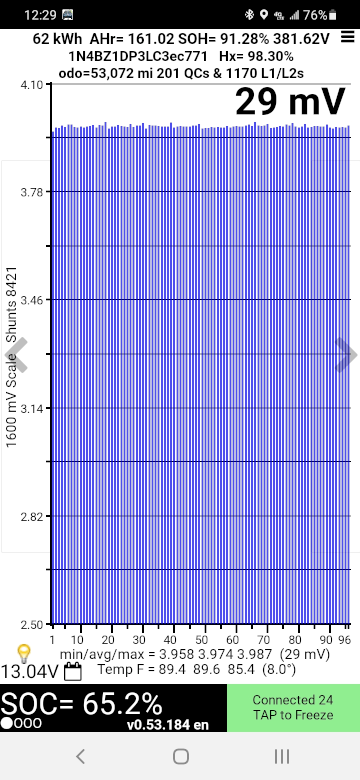LeftieBiker said:If they were wired in parallel then the amperage draw would still increase when both were in use at once.
Yeah, that makes sense

LeftieBiker said:If they were wired in parallel then the amperage draw would still increase when both were in use at once.
LeftieBiker said:A word of caution about that: it seems that there is a glitch in the energy monitoring system. It doesn't show an increase in consumption when you use the heater and A/C at the same time, even though physics suggests that that can't be the case. This is true even at higher temps.
LeftieBiker said:If they were wired in parallel then the amperage draw would still increase when both were in use at once.
LeftieBiker said:I think that some of these more or less fixed values were just programmed into the monitor, rather than being measured, and that someone goofed and left out this particular value.
LeftieBiker said:Then what is your theory as to why the energy monitor doesn't 'see' it when the A/C load is added to the heat load..?
lorenfb said:LeftieBiker said:Then what is your theory as to why the energy monitor doesn't 'see' it when the A/C load is added to the heat load..?
I never use those screens, a waste of time, and anything other than a clamp-on amp-meter for battery load testing of convenience features.
DougWantsALeaf said:Here is an Edmunds driver testing a 2021 S+. Notice it's highway performance, quite a bit higher than the inside EV test with the larger rims. Pretty comparable to the MY SR (not sure how you even find those) and the M3 SR+.
https://youtu.be/ERoSVfxlQM8
DougWantsALeaf said:I have also timed my Leaf at 6.7-6.8 seconds 0-60.
DaveinOlyWA said:DougWantsALeaf said:I have also timed my Leaf at 6.7-6.8 seconds 0-60.
Same, although it was a challenge to launch properly w/o spinning. I briefly considered dropping PSI to 32...
At least for those people who regularly check for battery degradation, the LEAF really does select for people who can tolerate the drip-drip of bad news with a calm response. The part I find fascinating is the feeling I get from some posters that they derive satisfaction from the crappy LEAF battery since it gives them something to post about and commune over.DougWantsALeaf said:I do miss the 775 gids I had when the car was new. The psychology if a slowly shrinking battery capacity, I guess is kind of like aging. You want it to stop, but know it won't.
The part I find fascinating is the feeling I get from some posters that they derive satisfaction from the crappy LEAF battery since it gives them something to post about and commune over.

Even including the electricity that I had to pay for, which works out to $800 (that's a high guess since rates were actually cheaper years ago) at my state's current kW/h rate would have easily been eaten up by the oil changes and other ICE maintenance over those 2 years.
Enter your email address to join: